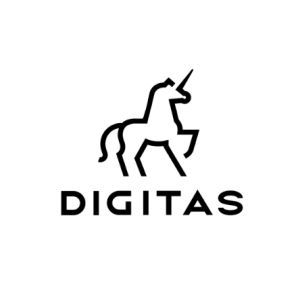
Production Will Never Be the Same Post Covid-19

Late last winter — 12th March, to be exact — we received notification that our Digitas offices would close until further notice due to the Covid-19 pandemic. Right around the same time, one of our biggest clients was preparing to shoot in Los Angeles when word came down that all live film production was being put on hold. The next several weeks were a series of long hours and endless calls as we tried to figure out how to create new content without being able to leave our homes.
Nearly everyone working at any creative agency can share a similar story. Despite the limitations, we still had to find a way to help our clients communicate their messages in an effective and timely manner. And while the challenges we faced were insignificant compared to what was happening globally, it still forced us as an industry to reinvent how we worked and find solutions when it didn’t look like any were possible.
As 2020 thankfully comes to a close, we’ve adjusted to the 'new normal' of delivering content while working from home and collaborating remotely. Whether or not we ever go back to the 'old normal' remains to be seen. But even if it does, the events of the past year have helped us learn how to work smarter and will lead to long-lasting changes in our industry.
Here are five key takeaways from 2020 that will continue to shape how we approach production moving forward.
1) Speed to market is crucial
When the pandemic struck, much of the work that was in rotation suddenly became irrelevant in the context of current events. Brands needed to respond in real time with messaging that addressed the crisis. Spots that used to take months were completed from start to finish within a week. While our mission to raise the bar creatively remains at our core, the need for agility will continue moving forward - especially now that we've proven what’s possible, brands, agencies and production companies will need to adapt accordingly.
2) Leaner budgets are here to stay
With the possible exception of the Super Bowl, the days of spending millions on a new campaign or TV spot are over. Brands have learned that we can be scrappy and still generate high-quality, breakthrough content. We’ve done this by thinking outside the box in how we utilise assets such as user-generated content and leveraging creative editing to recut and repurpose existing assets in new ways (a great editor is the best secret weapon that every brand needs). Thanks to virtual production and remote viewing capabilities, we can now produce content without traveling, another huge savings. In short, we've demonstrated that we can create memorable, innovative work much more efficiently.
3) Diversity and inclusion is a requirement
While we were in the throes of the pandemic, our nation witnessed the death of George Floyd and many of us took part in the resulting protests and calls for justice. These events forced some to more closely examine our own biases (conscious and unconscious) and the role we can play in fighting against that bias and promoting equality, both personally and professionally. Brands have an opportunity to be drivers of social change. This means embracing diverse and underrepresented talent in front of and behind the camera, ensuring that they are hiring talent that is representative of their consumers and the country to ideate, conceptualise and produce their content.
4) Live action alternatives are here to stay
One of the great challenges we faced when the shelter-in-place orders were in full effect was how we would be able to create new content without filming talent. Out of necessity, we pivoted to alternate forms of production such as augmented reality, real-time rendering and CGI to help us bring our ideas to life. These spots were so well done that most consumers probably never noticed the unusually high number of ads throughout the spring and summer that were produced entirely with this technology. Even though we’re now in a place where we can once again capture live action content, we can expect the animation trend to continue into 2021 and beyond as new technologies make this form of storytelling more effective.
5) Consumers now expect personalisation
The idea of making messaging more targeted and personalised is not new, but the events of the past year have amplified the importance of building meaningful customer experiences and sped up the process by which brands hope to achieve this goal. To do this effectively requires leveraging data, media, technology and content to drive real-time relevance - delivering the right message to the right person at the right time. A lot of progress has been made on the media side of the business with precision targeting and programmatic buying, but there is still work to be done to realise the full potential of personalisation on the content side of the equation. Look to see further integration of data, media and creative teams, as well as enhancements in technology to automate the way content has historically been developed. Future solutions depend on it.
It’s often said that necessity is the mother of invention. And while the last year has challenged us in ways we hadn’t anticipated and we hope we don’t have to repeat, it has helped us reimagine what we’re capable of accomplishing and given us renewed optimism for what we can do moving forward.
- Jennifer Fernbach, SVP optimised content solutions, Digitas













